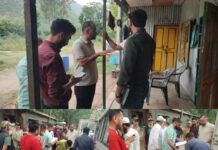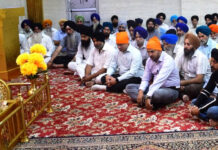The much-awaited findings of the first national serosurvey conducted by the ICMR, published in the Indian Journal of Medical Research, indicate that 0.73 per cent adults in India were exposed to SARS-CoV-2 amounting to a total of 6.4 million infections by early May. The survey was conducted from May 11 to June 4 and covered 28,000 individuals whose blood samples were tested for IgG antibodies using COVID Kavach ELISA kit. Also, seropositivity was the highest in the age group of 18-45 years (43.3 per cent), followed by those between 46-60 years (39.5 per cent) and it was the lowest among those aged above 60 (17.2 per cent). It”s estimated that there were a total of 64,68,388 adult infections in India by early May, the survey report said. “The findings of our survey indicated that the overall seroprevalence in India was low, with less than one per cent of the adult population exposed to SARS-CoV-2 by mid-May 2020. “The low prevalence observed in most districts indicates that India is in early phase of the epidemic and the majority of the Indian population is still susceptible to SARS-CoV-2 infection,” the survey report stressed. It highlighted the need to continue to implement context-specific containment measures including testing of all symptomatics, isolating positive cases and tracing high-risk contacts to slow down transmission and prevent overburdening of the health system. Males living in urban slums and with occupations involving high risk of exposure to potentially infected persons were associated with seropositivity. According to the survey report, seroprevalence ranged between 0.62 and 1.03 per cent across the four strata of districts. The stratification of districts as zero cases (15 districts), low (22 districts), medium (16) and high (17) was done on the basis of the reported number of COVID-19 cases as on April 25. Based on the overall adjusted seroprevalence of 0.73 per cent and reported number of COVID-19 cases, it was estimated that for every RT-PCR confirmed case of COVID-19 there were 82-130 infections in India. As part of the survey, a total of 30,283 households were visited from 700 clusters in 70 districts across the four strata. About one-fourth (25.9 per cent) of the surveyed clusters were from urban areas. A total of 28,000 individuals consented to participate, the report stated. Nearly half (48.5 per cent) of the participants were aged between 18 and 45 and 51.5 per cent (14,390) were females. In all, 18.7 per cent of the participants had an occupation with a high risk of exposure to potentially infected persons. The survey noted that there could be under-detection of COVID-19 cases in the zero stratum districts on account of low testing as well as poor access to testing laboratories. In four of the 15 districts in this stratum, COVID-19 testing laboratories were not available in the district headquarters and the samples were transported to the state headquarter hospitals for diagnosis. The present findings of seropositivity in the strata of districts with zero to low incidence of COVID-19 cases underscores the need to strengthen surveillance and augment the testing of suspected cases in these areas, the survey report said.

Dogra Herald is the media of J & K, breaking language and geographical barriers, connecting J & K to the rest of India.
0191 245 4946
info@dograherald.com
Latest articles
3rd ODI: Gill’s ton, all-round bowling show help India sweep England 3-0
AGENCYNEW DELHI, Feb 13Opener Shubman Gill’s majestic 112, along with solid half-centuries by Shreyas Iyer (78) and Virat Kohli (52), propelled India...
Did not write that Farooq supported Art 370 abrogation: Dulat
DH NEWS SERVICENew Delhi, Apr 17Amid a controversy over his new book The Chief Minister and the Spy’, former Research and Analysis...
Modi govt did justice with all communities in Jammu & Kashmir: Ravinder Raina
DOGRA HERALD BUREAUreasi, Apr 4The Modi government did justice with all communities in Jammu & Kashmir in last 10 years, stated Ravinder...


























